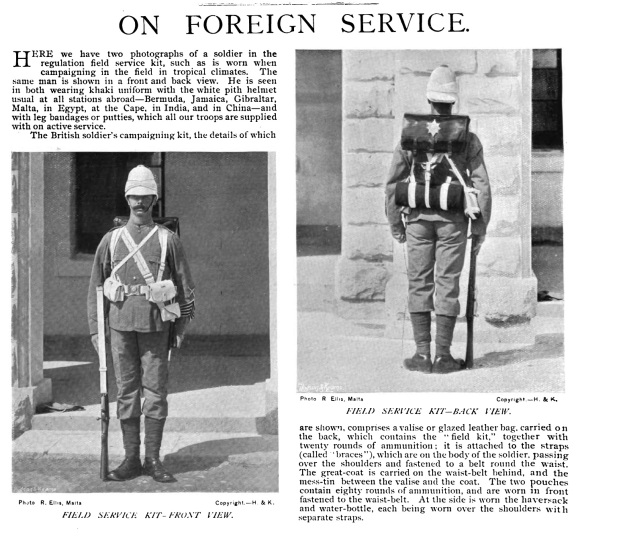The first tranche of 2/Royal Welsh Fusiliers, consisting of HQ and four other companies, arrived in Candia on 8th April 1897, the remainer of the batallion arriving in August that year. They remained on Crete until August 1898, when they departed for Egypt. However, they returned again to the island the next month as part of the British reinforcements sent after the riots of 6th September; finally departing for good in December 1898.
Their arrival in 1897 was witnessed by a correspondent sent by the London newspaper, the Standard:
From our own correspondent. Candia Friday [9 April 1897]
I arrived here at dawn to-day on board the transport Malacca, conveying a company of the Seaforth Highlanders and a battalion of the Welsh Fusiliers. The disembarkation of the Highlanders was begun at once, with the assistance of the Bluejackets from the Bruiser and the launches of the Trafalgar. The work was favoured by perfectly calm weather, and all arrangements had, as far as possible, been made beforehand, even to the building of ovens and the preparation of kitchens by fatigue parties of the Highlanders already here. The Company of the Seaforths marched up to the barracks about four o’clock, but the Welsh Fusiliers will probably remain on board until to-morrow. The Malacca has brought five hundred tons of extra regimental stores, and as another canteen ship arrived simultaneously, the men need not be afraid of running short of personal comforts, although they have plenty of work before them. The Fusiliers will be camped along the ramparts to the north-west of the Highlanders, and will take over almost one-half of the ground hitherto patrolled and guarded by the latter.
Admiral Canevaro came over here this after noon, in consequence of exaggerated reports that the Turks had attempted to pillage the Catholic Church, during the fire that occurred recently close by, notwithstanding that the building was guarded by Italian sailors. It is so difficult in this part of the world to get at the truth of things, save by making exhaustive personal inquiries, that it is only with the utmost reserve that I give what are, lam told, the actual facts. It seems, then, that an Italian sailor dropped a revolver while engaged in extinguishing the flames, and that it was picked up by a Turkish soldier. The action was misconstrued, and gave rise to a short dispute, which, however, was speedily settled by the Italian and Turkish officers.
Yesterday nearly the whole of the Turkish garrison turned out, after requesting the Foreign troops to patrol the town while they engaged the Insurgents. A tremendous fusillade was kept up till sunset, resulting in the loss of a single horse on the Ottoman side. Meanwhile, Captain Grenfell landed all the Bluejackets that could be spared, and marched them round the ramparts.
The small-pox is, I am sorry to say, on the increase, and the streets are full of people in various stages of the disease. Most of the Seaforth Highlanders have been vaccinated afresh, but comparatively few of them “took.” The men are now fairly comfortable, though it is rather provoking to see the Turks fighting, or pretending to fight, every day, while they themselves are confined to barracks — not a man being allowed to go into the town except on duty, nor even the officers, unless they go in twos and threes.
Sir Alfred Biliotti arrived here about noon. Colonel Chermside, the British Commandant, has so far recovered from his recent indisposition as to be able to resume his outdoor duties.
















